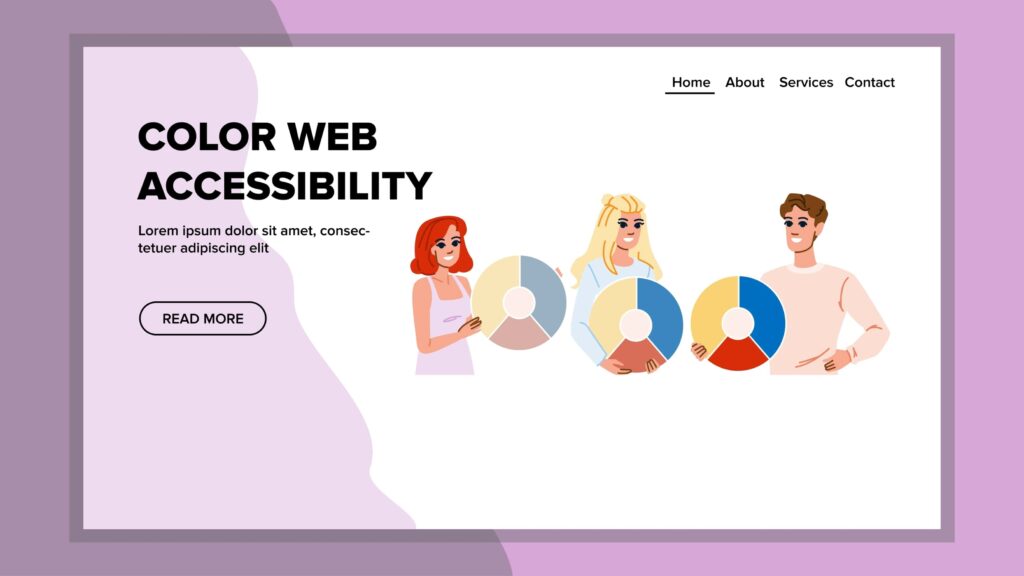CPI Love: Celebrating Passion and Progress
Explore the vibrant world of CPI and discover insights, stories, and news that ignite your passion.
Web Accessibility: Making Every Click Count
Discover the secrets to web accessibility and learn how to make every click count for all users. Unlock a more inclusive online experience today!
Understanding Web Accessibility: Key Principles and Best Practices
Understanding web accessibility is crucial for creating inclusive online experiences. It ensures that all users, regardless of their abilities or disabilities, can perceive, understand, navigate, and interact with the web. Key principles of web accessibility include perceivable, operable, understandable, and robust. These principles guide developers and content creators in making accessible websites. For instance, perceivable means that content must be available to all users through various means such as text alternatives for non-text content, video captions, and adaptable layouts. Additionally, using proper heading structures can enhance navigation for users relying on screen readers.
Implementing best practices is essential for achieving web accessibility. First, ensure that all images include alt text to describe their content effectively. Next, use color contrast that meets accessibility standards to make text readable for users with visual impairments. Moreover, keep your website's navigation consistent and intuitive to aid users in finding the information they need. Furthermore, test your website with accessibility tools and involve individuals with disabilities in your testing processes to identify potential barriers. By adhering to these guidelines, you contribute to an inclusive digital environment where everyone can access and enjoy the content.

Common Web Accessibility Mistakes to Avoid
Web accessibility is essential for creating an inclusive online experience, yet many website owners make critical mistakes that hinder their efforts. One common mistake is failing to provide alternative text for images. This oversight not only affects visually impaired users who rely on screen readers but also impacts SEO, as search engines cannot interpret images without this descriptive text. Another frequent error is neglecting keyboard navigation; websites should be navigable using only a keyboard to accommodate users with mobility impairments. Ensuring all interactive elements are accessible without a mouse is vital for an inclusive design.
Another significant issue arises from using color contrast that is insufficient for users with visual impairments, including color blindness. To enhance accessibility, it is crucial to follow established contrast ratio guidelines that ensure text is readable against its background. Moreover, many websites overlook the importance of clear and consistent navigation. When users cannot easily understand how to navigate a site, it can lead to frustration and ultimately deter them from engaging further. Emphasizing usability and clear navigational elements can significantly enhance the user experience for all visitors, regardless of their abilities.
How Does Web Accessibility Impact User Experience?
Web accessibility plays a crucial role in shaping the overall user experience by ensuring that all individuals, regardless of their abilities or disabilities, can effectively interact with digital content. A well-designed website that prioritizes accessibility makes it easier for people with visual, auditory, or motor impairments to navigate, understand, and engage with the information presented. This inclusive approach not only enhances usability for those with disabilities but also benefits other users by creating a more intuitive and streamlined interface. For instance, clear headings, alternative text for images, and keyboard navigation are features that improve accessibility and contribute to a positive browsing experience for everyone.
Moreover, investing in web accessibility has significant implications for user experience metrics, such as engagement and conversion rates. When users encounter a site that accommodates their needs, they are more likely to stay longer and interact with the content. Studies have shown that accessible websites can lead to increased customer satisfaction and loyalty. Moreover, as search engines place greater emphasis on accessibility as a ranking factor, optimizing your site in line with accessibility standards can enhance your visibility and reach. Ultimately, robust web accessibility practices not only foster inclusivity but also represent a strategic advantage in today’s competitive digital landscape.